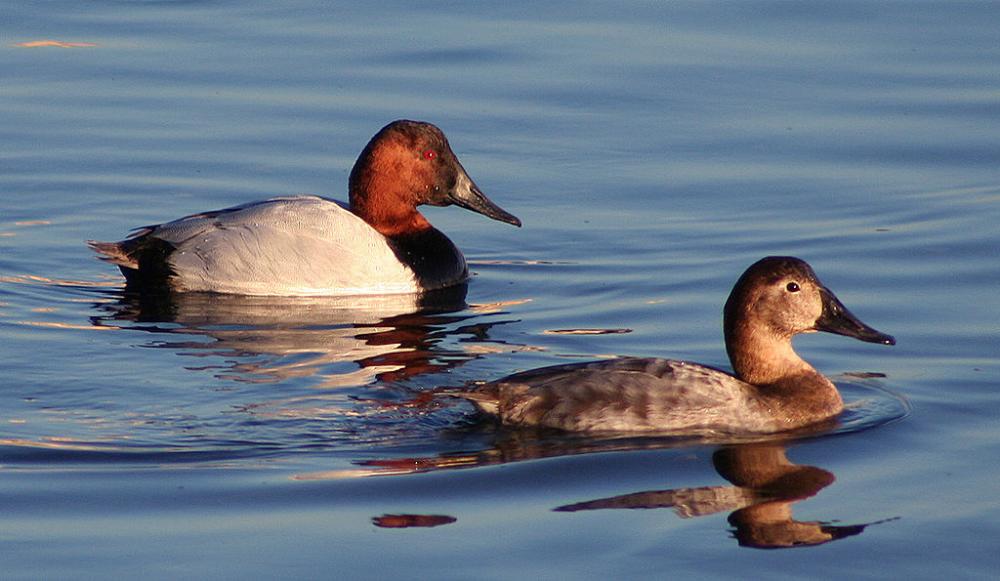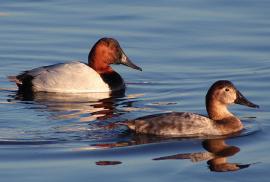Guide to Boreal Birds
Overview
Inhabitants of large prairie marshes during the summer, these wary birds usually spend the winter on large lakes, bays, and estuaries. A major item in their diet is wild celery, which gives their flesh a rich taste; they are generally regarded as the best-tasting of North American waterfowl. In recent years their numbers have declined drastically, chiefly because of the draining of the large marshes they require to breed. Where they are still relatively numerous, their long, V-shaped flocks are a striking sight as they move from one feeding ground to another.
Description
19-24" (48-61 cm). Male has a whitish body, black chest, and reddish head with low forehead. Long bill gives head a distinctive sloping profile. Female grayish, with sandy-brown head. At a distance male Canvasbacks can be distinguished from similar Redheads by their white bodies, the male Redhead's body being largely gray.
Voice
Males grunt or croak; females quack.
Nesting
7-10 greenish eggs in a floating mass of reeds and grass anchored to stems of marsh plants.
Habitat
Nests on marshes; winters on lakes, bays, and estuaries.
Range/Migration
Breeds from Alaska south and east to Nebraska and Minnesota. Winters in coastal and interior West from British Columbia south and in East from Massachusetts south to Gulf Coast and in Mississippi Valley.



